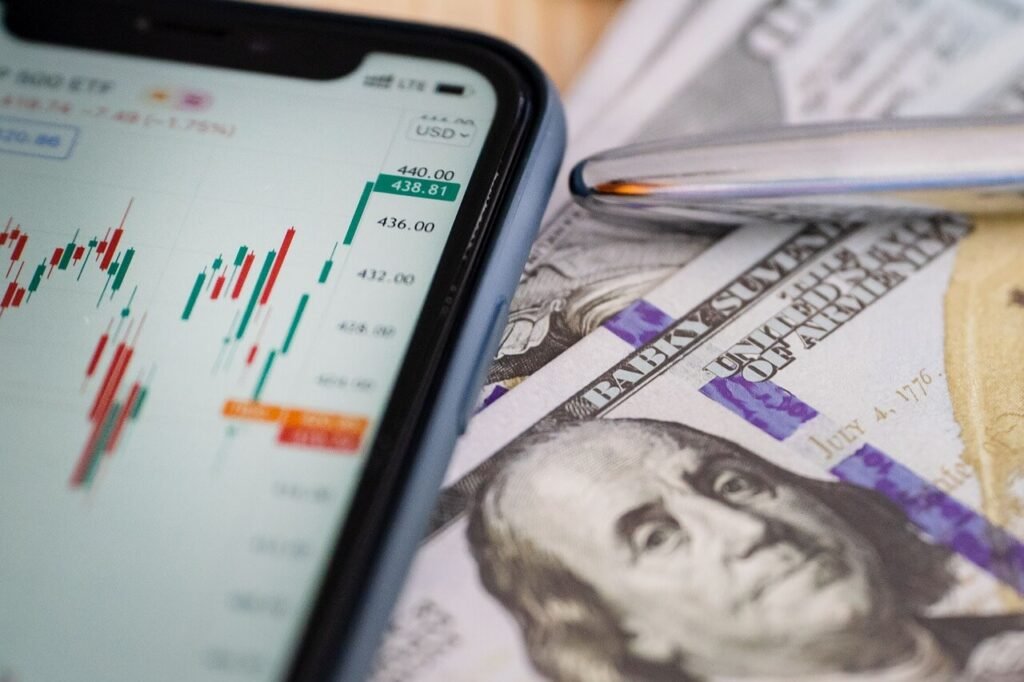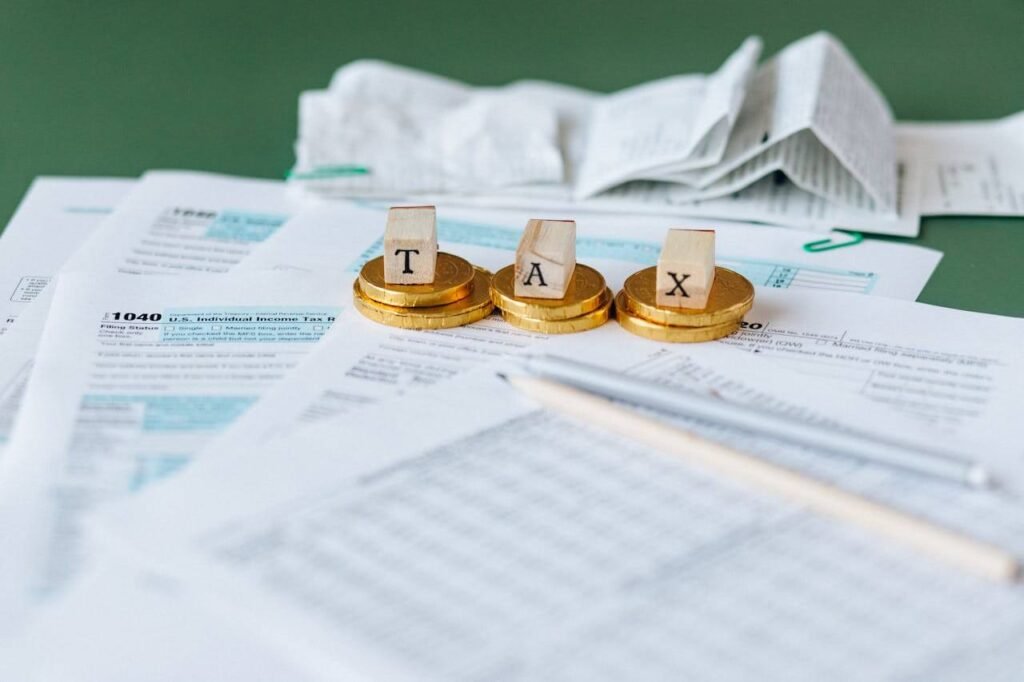Building wealth doesn’t always require reinventing the wheel. One of the most time-tested, reliable, and beginner-friendly strategies to grow your money is through dividends. If you’ve ever dreamed of earning money while you sleep, dividend investing may be the closest thing to that dream becoming reality.
Many investors are drawn to the stock market for the potential of big gains, but that usually involves timing, speculation, or a lot of risk. Dividends offer a calmer, steadier path. Instead of constantly worrying about when to buy or sell, you can focus on owning quality companies that share a portion of their profits with you—quarter after quarter, year after year. This steady stream of income can be used to pay bills, reinvest for compounding growth, or even serve as a supplement in retirement.
The beauty of dividends is that they combine two things most people want from investing: predictable income today and long-term wealth growth for tomorrow. Whether you’re brand new to investing or looking for ways to strengthen your portfolio, understanding dividends can help you build a strategy that lasts through market ups and downs.
In this guide, we’ll break down what dividends are, how they work, and why they can be such a powerful tool for creating passive income.
What Are Dividends?

Dividends are payments made by companies to their shareholders, usually in the form of cash. They represent a portion of the company’s profits that is returned to investors. Think of it as a company’s way of saying “thank you” for believing in them and providing capital. Not all companies pay dividends—many prefer to reinvest profits into growth—but plenty of established businesses share their success with shareholders through consistent payouts.
In many ways, dividends reflect the financial strength and stability of a company. Firms that pay and consistently grow dividends are usually established, profitable, and well-managed. For investors, this can serve as a signal of confidence, showing that management believes the company’s future earnings are reliable enough to return cash to shareholders without harming operations.
According to S&P Dow Jones Indices, companies in the S&P 500 paid out $588.2 billion in dividends in 2023, showing just how massive this stream of wealth creation can be. This makes dividends a serious force in long-term investing strategies. Beyond just the cash flow, they represent participation in the success of some of the world’s strongest companies.
Why Dividends Matter in Wealth Building
Dividends offer a unique advantage compared to other investment strategies: they provide both growth potential and steady income. While stock prices may fluctuate, dividend-paying companies often maintain or even increase their payments, making them attractive during volatile markets.
For long-term investors, reinvesting dividends (through a Dividend Reinvestment Plan, or DRIP) can be transformative. Instead of pocketing the cash, your dividends automatically buy more shares, compounding your investment over time. Albert Einstein once referred to compound interest as the “eighth wonder of the world,” and dividend reinvestment is one of the clearest real-life applications of this principle.
A study by Hartford Funds found that from 1930 to 2022, dividends and reinvested dividends accounted for 40% of the S&P 500’s total return. Without dividends, stock market growth would look much flatter over the long haul.
How Do Dividend Payments Work?
Dividend-paying companies typically make payouts quarterly, though some distribute them monthly or annually. The process usually follows these steps:
- Declaration Date: The company announces the dividend and the amount per share.
- Ex-Dividend Date: Investors must own the stock before this date to qualify for the upcoming dividend.
- Record Date: The company checks its records to confirm which shareholders are eligible.
- Payment Date: Dividends are deposited into investor accounts.
For example, if you own 100 shares of a company paying a quarterly dividend of $0.50 per share, you’ll receive $50 every three months. Simple, straightforward, and repeatable.
Dividend Yield: Measuring Passive Income Potential

One of the most common metrics investors use to evaluate dividend stocks is the dividend yield. This is the annual dividend per share divided by the stock price. For instance, if a stock is priced at $100 and pays $4 in annual dividends, the yield is 4%.
Yields vary widely by industry. Utilities and real estate investment trusts (REITs) often pay higher yields, while growth-oriented tech firms may pay little to nothing. According to Yardeni Research, the average dividend yield of the S&P 500 hovered around 1.5% to 2% in 2023—not huge, but when paired with long-term capital appreciation, it becomes meaningful.
High yields can be tempting, but they’re not always sustainable. A sudden spike in yield might signal trouble if the company’s stock price has fallen sharply. Always balance yield with the company’s financial health and track record of payments.
The Power of Dividend Growth Investing
Dividend growth investing focuses on companies that consistently increase their payouts over time. These are often stable, financially healthy businesses with predictable cash flows. Many investors turn to the Dividend Aristocrats—S&P 500 companies that have raised dividends for at least 25 consecutive years—as a foundation for building passive income.
As of 2023, there are over 65 Dividend Aristocrats, including household names like Coca-Cola, Johnson & Johnson, and Procter & Gamble. These companies have shown resilience through recessions, market crashes, and inflationary periods, making them attractive to investors who want both income and stability.
Historically, dividend growth stocks have outperformed the broader market. Research by Ned Davis Research shows that from 1973 to 2022, stocks that consistently grew their dividends returned an average of 10.2% annually, compared to just 7.7% for non-dividend payers.
Building a Dividend Portfolio

When building a dividend portfolio, diversification is key. Instead of chasing the highest yields, look for a balanced mix of companies across different sectors. A sample allocation might include:
- Blue-chip dividend stocks (e.g., Dividend Aristocrats)
- Utilities and REITs for steady cash flow
- Dividend-focused ETFs for instant diversification
- International dividend stocks for global exposure
The goal is to create a reliable income stream that grows steadily over time, while also capturing the long-term appreciation of high-quality businesses.
Reinvestment also plays a critical role. Even modest yields can turn into impressive long-term gains when compounded. For example, an investor reinvesting a 3% dividend yield in a portfolio that also grows 5% annually would see nearly double the returns compared to someone who only takes the cash and doesn’t reinvest.
Taxes and Dividends: What to Expect

Dividends aren’t completely “free money.” In the U.S., they are subject to taxes, and how much you pay depends on both the type of dividend and the type of account you hold the investment in. Understanding these rules can help you maximize your after-tax returns.
Types of Dividends
- Qualified Dividends: These are the most favorable. They meet certain IRS requirements (such as being paid by a U.S. company or qualified foreign corporation and held for a minimum time). Qualified dividends are taxed at long-term capital gains rates of 0%, 15%, or 20%, depending on your income bracket. For many middle-income investors, the 15% rate applies.
- Ordinary (Non-Qualified) Dividends: These don’t meet the IRS’s requirements for qualified status and are taxed at your regular income tax rate, which can be as high as 37% for high earners. These are more common in certain industries, like REITs and some international stocks.
Taxes by Account Type
- Taxable Brokerage Account: Dividends received here are subject to federal (and often state) taxes in the year they’re paid. This is where tax efficiency matters most.
- Traditional IRA / 401(k): Dividends grow tax-deferred. You don’t pay taxes when they’re paid out, but withdrawals in retirement are taxed as ordinary income.
- Roth IRA / Roth 401(k): The most powerful option for dividend investors. Dividends grow tax-free, and withdrawals in retirement are also tax-free, provided you follow Roth rules.
Other Considerations
- Dividend Reinvestment: Even if dividends are automatically reinvested (via a DRIP), they are still taxable in a regular brokerage account.
- International Stocks: Dividends from foreign companies may have withholding taxes (often 15–30%) before you even see them. The U.S. offers a foreign tax credit in some cases, which can offset part of this.
- High-Income Surtaxes: Investors with high incomes may face an additional 3.8% Net Investment Income Tax (NIIT) on dividends.
- Retirement Strategy: For retirees, qualified dividends can be especially tax-friendly. Many middle-income retirees pay little to no federal tax on qualified dividends, especially if their taxable income falls below IRS thresholds.
Why This Matters
Taxes can eat away at your dividend income if you don’t plan ahead. For example, a 4% yield in a taxable account might shrink to 3.4% after taxes, while the same dividend in a Roth IRA could remain the full 4% in your pocket. Choosing the right account for dividend stocks can be the difference between an average portfolio and a highly efficient income stream.
Risks to Consider
While dividends are a powerful wealth-building tool, they aren’t risk-free. Some of the most common risks include:
- Dividend Cuts: Struggling companies may reduce or eliminate payouts to conserve cash.
- Concentration Risk: Overloading on one sector (like REITs or energy) can expose you to downturns.
- Inflation: Fixed dividends may lose purchasing power over time if they don’t grow.
That said, focusing on companies with long histories of consistent payments and dividend growth can help mitigate these risks.
Final Thoughts: Turning Dividends Into True Passive Income

Dividends offer something rare in the investing world: the ability to earn income without selling your investments. Whether you use dividends to reinvest and grow wealth faster or to cover living expenses, they can form the backbone of a financial strategy that balances growth and security.
The key is patience. Dividend investing isn’t a get-rich-quick scheme—it’s a get-rich-slowly approach. Over years and decades, consistent payouts and reinvestment can snowball into substantial wealth. With the right companies, strategies, and a long-term mindset, dividends can help you reach financial independence and enjoy the peace of mind that comes from knowing your money is working for you—even while you sleep.
What makes dividends especially motivating is their flexibility. Some investors use them to supplement their paycheck, others use them to cover retirement expenses, and many choose to reinvest them for decades to build a legacy of wealth for future generations. However you decide to use them, dividends provide a pathway to financial freedom that doesn’t rely on guesswork or speculation. It’s a simple, repeatable strategy that rewards patience and consistency—the very traits that turn everyday investors into long-term success stories.
👉 Ready to start your investing journey? Check out our beginner-friendly guide: Investing 101: A Beginner’s Guide to Growing Your Money Safely.
Frequently Asked Questions About Dividends
1. Are dividends guaranteed?
No, dividends are never guaranteed. Companies can reduce or eliminate them if earnings decline or they need to preserve cash. That’s why many investors focus on companies with a long history of steady or growing dividends, such as the Dividend Aristocrats.
2. How often are dividends paid?
Most U.S. companies pay dividends quarterly (every three months), though some pay monthly or annually. REITs and certain ETFs are popular among investors who prefer monthly payouts.
3. Do I need a lot of money to start earning dividends?
Not at all. Thanks to fractional shares offered by many brokerages, you can start investing in dividend-paying stocks or ETFs with as little as a few dollars. Over time, reinvesting dividends helps even small investments grow meaningfully.
4. What is a good dividend yield?
A “good” yield depends on your goals. Typically, yields between 2%–5% are considered sustainable for established companies. Ultra-high yields (above 7%–8%) may be risky, as they sometimes signal financial trouble.
5. Are dividends better than growth stocks?
It depends on your strategy. Dividends provide steady income and stability, while growth stocks focus on capital appreciation. Many investors build a balanced portfolio that includes both.
6. How are dividends taxed?
In the U.S., qualified dividends are taxed at favorable long-term capital gains rates (0%, 15%, or 20%). Ordinary dividends are taxed at your regular income rate. Holding dividend stocks in tax-advantaged accounts like Roth IRAs can eliminate or defer these taxes.
7. Can dividends make me financially independent?
Yes, but it takes time and consistent investing. Building a portfolio large enough to generate meaningful passive income typically requires patience, reinvestment, and discipline. Over decades, dividends can become a significant source of financial freedom.




Schools should be teaching about the stock market and investing to grade schoolers. If young people learn how to invest, they can start early in life and have a ton of money by the time they are ready to retire. Thanks for this information!
They really should teach the younger generation about investing and finances in general. I’m sure it would have helped so many adults now if they were taught as kids. Hopefully by spreading awareness through blogs like this we can help educate those who need it for free! Thank you for your comment.
Is there a minimum amount of time shares need to be held before they can be eligible to receive dividends?
Great question! You just need to own the stock before the ex-dividend date, which is the cutoff date set by a company that determines who is eligible to receive its next dividend. Think of it as the deadline. Now when it comes to the amount of time the stock is held, that determines if the dividend is “qualified” (lower taxes) or “ordinary” (higher tax rate). For a dividend to be “qualified”, it must be held for at least 61 days during the 121-day period that starts 60 days before the stock’s ex-dividend date.